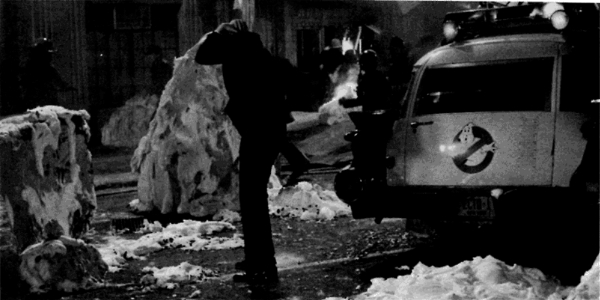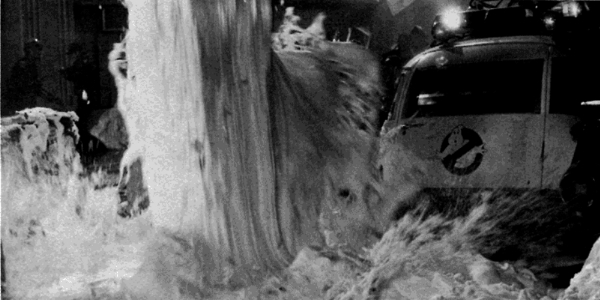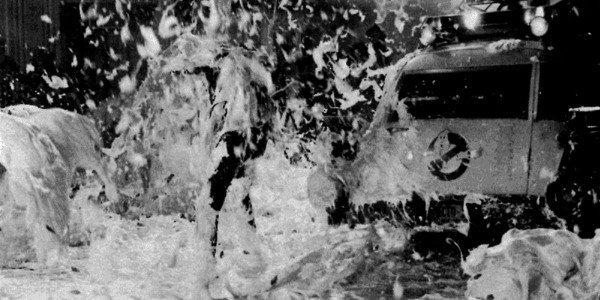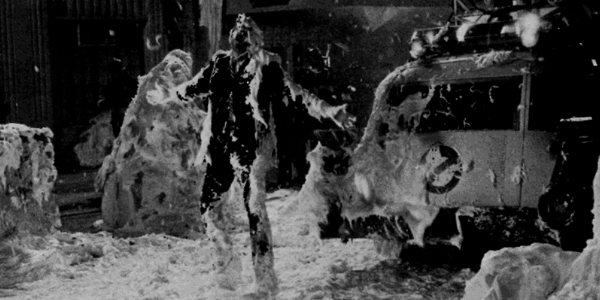Ghostbusters I
The
ghostbusters films are almost synomous with slime, with plenty of
occurances in both the films, including Peter Venkman (Bill Murray)'s
infamous quote "He slimed me", voted in the top 100 movies quotes of
all time (1).
The first film introduces us to a team of 4
parapsychologists who team up to start a ghost catching business when
they find major paranormal activity threatening the city. We get
introduced to slimer, a friendly ghost, who as his name suggests is
very slimy...
Slimer is a costume based ghost, with some
animatronics to give movement and facial expressions. He is acompanied
by the trademark slime, based on 'Methocel' a Methylcellulose ether derivative (2).
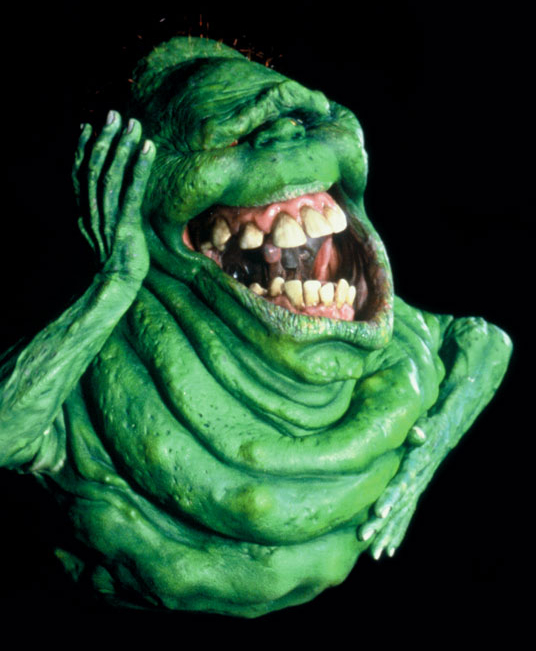
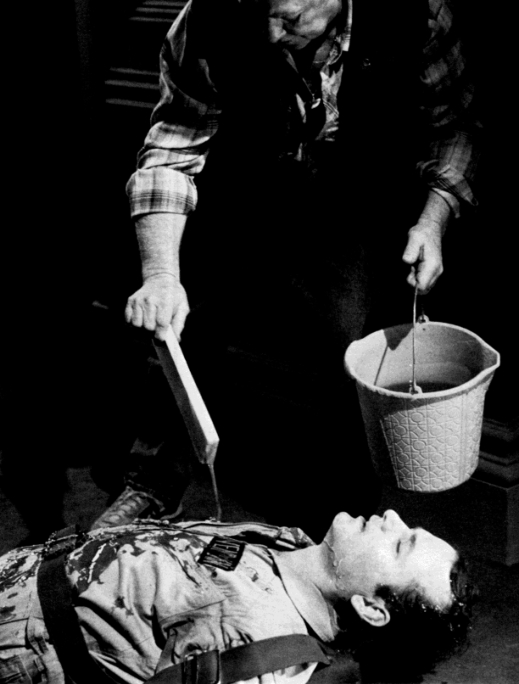 Slimer and Slime Application
Slimer and Slime Application
We also meet the giant Stay Puft Marshmallow man, 'marshmallow' engulfs
Walter Peck the EPA guy late in the film. This effects shot was achieved with 200lbs (90kg) of
shaving cream released from a large bag hanging from a crane (2).
Ghostbusters II
Ghostbusters
II was significantly more slime filled than original, particularly due to the
now famous river of slime that is central to the story, as it threatens
to engulf the city of New York. Variously known
as Psychomagnotheric Slime, Mood Slime and Psycho-Reactive Slime
it reacts to emotions, both positive and negative. Primarily pink in
the film, It has been portrayed in other colours in the animated series
(4).
Stuart
Fink, a project manager for GB2 has been quoted that an estimated 100,000
gallons were made, 40,000 of them in the museum scene (5).
As would be expected, a lot of
effort was put into both the river of slime and the other ectoplasmic ooze
effects in the film, with the team led by the effects supervisor, Chuck Gasper. The basis of the slime was hydroxypropyl-methylcellulose, branded Methocel, and coloured with a
food colouring. There were a number of variations between scenes, as
Chuck Gasper, speaks about in Cinefex (3);
"The usual formula to create thirty-two gallons of slime, was
about eight cups of methocel to four-and-a-half cups of separan. Then we would
add about fifty cc's of red food coloring and thirty-two gallons of water. You
could actually eat the stuff. It would not have any taste, but you could eat it.
The grade of methocel used is also used in pie thickeners and salad
dressings."
These quantities therefore equate to the following
proportions, by volume:
Methocel= 1.6%
Separan= 0.9%
Food colour= 0.04%
The separan is a "non-ionic polyacrylamide", normally used as a
flocculent in water treatment, however it would appear that this grade is no
longer in production (certainly under this trade name). It is this that creates
the stringiness clearly seen in some of the shots- for more info on this type of
material see the main slime page.
As
such large quantaties of slime were needed, it was mixed offsite by
Blair Adhesives in 1500 gallon batches and tankered to set. Converley
it was disposed of by collection by suction truck.
The good news however is that a variant of polyacrylamide is available as 'Sticky Yuck in the US; Sticky Yuck or as 'Slime Baff' or 'Slime Play' in the UK; Slime Play
I
have succeeded in making a very passable version of the slime using
1.5% Natrosol (as I haven't got any methocel, and it gives a clearer
goo than guar or xanthan gums) mixed with the slime play polyacrylamide.
The river as seen in the film was shot in miniature and
composited with live action shots against a partial set of the subway steps and
a matte painting of the rest of the tunnel. The river trough was approx. 1ft
wide by 10ft long, on a slight slope fed by a high level dump tank with the
slime recirculated back to the tank with a pump.
The specific colourings and visual look of the river took a
significant amount of effort and changes to produce; the colour mix has not been
revealed but the ooze contained a mica pearliser to give a shimmering effect and
had a layer of clear mineral oil on the surface. The river had various air
bladders and other methods of affecting the flow with puppetry used to produce
further movement and tentacle effects when needed.
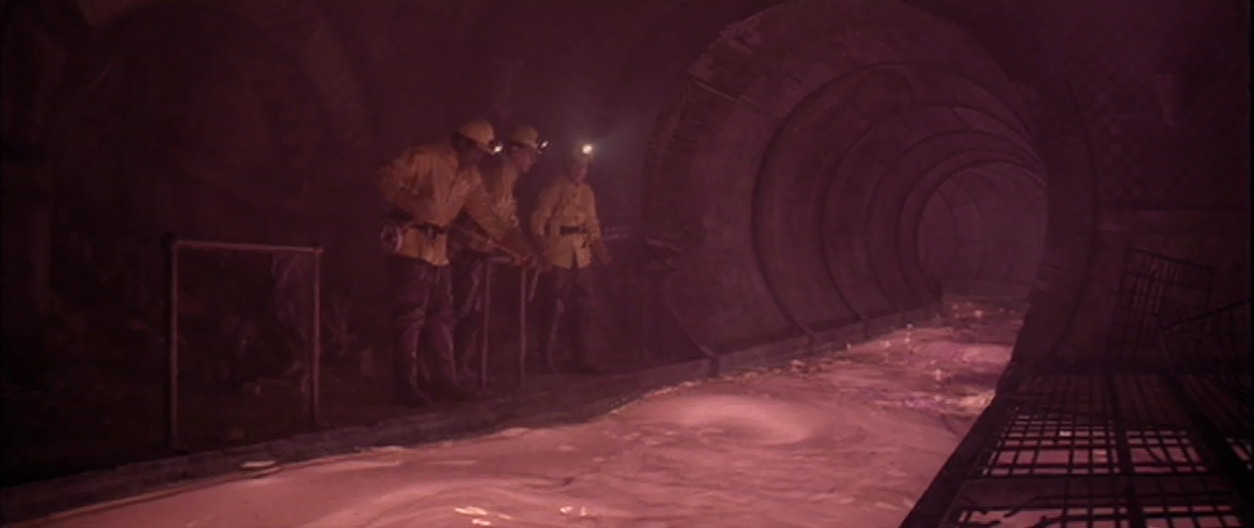
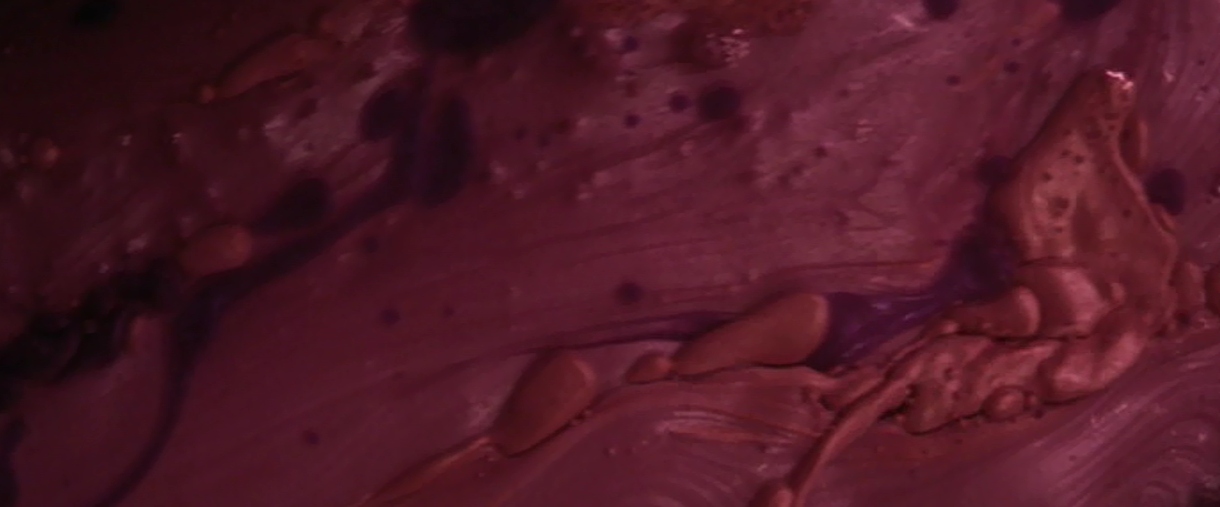
The River of Slime from
Ghostbusters II
Ghostbusters R
(Reboot)
Now
the Ghostbusters reboot has launched, more pictures, behind the scenes
videos and interviews have started to appear, giving us a much greater
insight into the effects in the film. Slime still forms a central tenet
of the film, much in the same way as the original.
Prior
to the film a few snippets of infor leaked out, particularly notable is
the fact that the slime effects are at practical, and not CGI. Paul
Feig, the director tweeted an image of the slime being used in June
2015 (6.). It looks fairly close to that used in the previous movies.
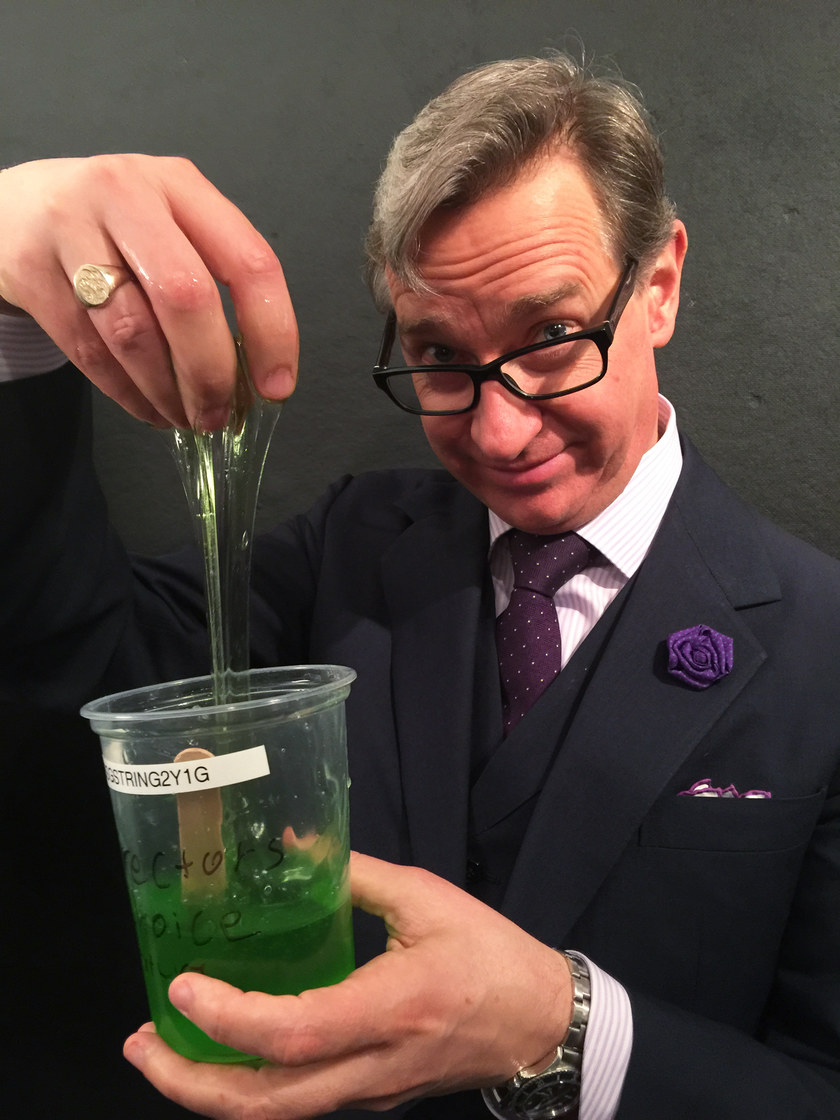
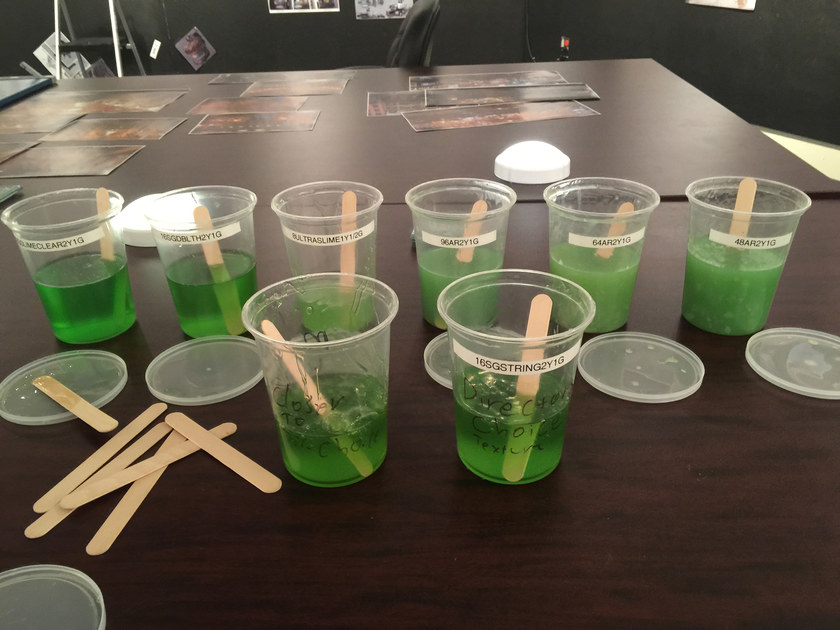 Tweeted Slime Image & Slimes Tested
Tweeted Slime Image & Slimes Tested
The
question "what is the Ghostbusters slime made of?" will be a big
question for many people, and is unlikely to be definitively answered
for some time as it is a 'trade secret' of the film. We can however
have a good stab at working out the recipe from the info available, and
indeed I am pretty confident that it is in reality quite close to the
first two films.
Firstly, it has been reported in a GQ article
(7) that tapioca flour forms part of the recipe- I believe that it is
unlikely this made it's way through to the final film as starch based
thickeners, of which tapioca flour is type (d) usually require boiling
to work as a thickener. This is not really practical for on-set
manufacture, and as stills from the video (9) show, the slime is mixed
from dry powders with water without boiling. The three cups at the rear
right of the test slimes photo above are labelled with a number and
'AR'- these suggest to me a starch, likely the tapioca and a 'mesh
size', a measure of the size of the powder.
Also in the image is container marked ultraslime, this is clearly the commercial product produced by Ultramaterials.
Most
of the images end in a code 2Y1G- I strongly suspect that this refers
to 2 Yellow 1 Green, proportions of colouring to be used.
It can
be seen from the images the below that the final slime is stringy. This
cannot be achieved by using a standard thickener alone, and so must be
an additive. In the earlier films, this was seperan, but as this is no
longer available I suspect it to be another brand of the same material,
a polyacrylamide.
The thickener that adds bulk to the slime is
likely to also similar- my suspicion is that this is Sodium Carboxy
Methyl cellulose (Sodium CMC), although at present this is
unconfirmed.
The colouring used looks to be a flourescent
yellow/green kids poster (tempera) paint used in a relatively low
concentrations, as can be seen from the image of the mixing, coupled
with the transparency of the slime in the screen shots.
In the screen shots from the behind the scenes video we can also find out a couple of interesting bits of other info;
Some of the effects of the slime can be seen to be enhanced by lighting from below, illuminating the the slime.
Slime
is sprayed in a number of cases; It can be seen that a fire nozzle is
connected to the end of the hose and in some cases a remotely
controlled valve is used to turn slime on or off.
The slime looks
to be fired from a pressurised tank- you can see effects crew filling a
tank in one of the stills that looks like an air over fluid pressure
tank.
A standard 'shop vac' is used for cleaning up the slime.
If
you want to make your own slime, I would use the following as a close
recipe. Please see my gunge page LINK for full details on mixing and
using your slime.
Ingredients;
1.5% Sodium Carboxy Methyl Cellulose- from chemical suppliers, ebay etc.
1% Polyacrylamide- "Slime Play" in the UK or "Sticky Yuck" in the USA
Dry blend (mix) the ingredients before mixing into water
Warm water
Flourescent green and yellow poster paint (tempera) to colour to your desired colour
I can supply Sodium CMC and Polyacrylamide within the UK if you need to make a lot of slime.
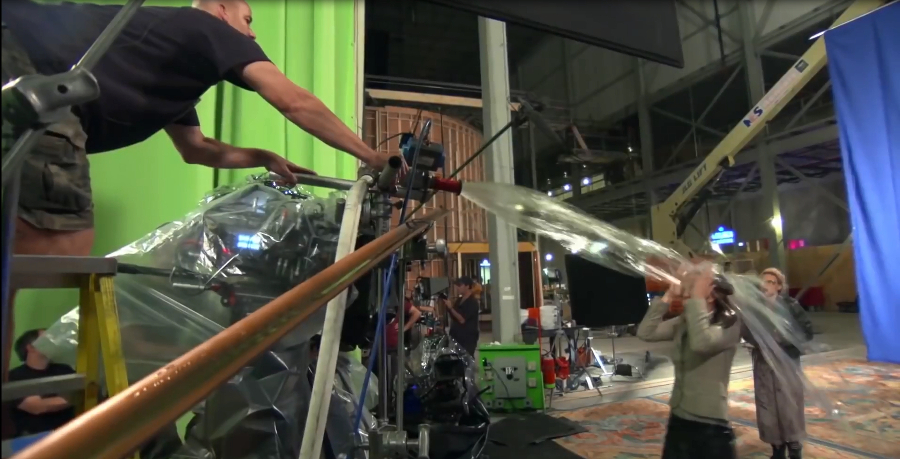
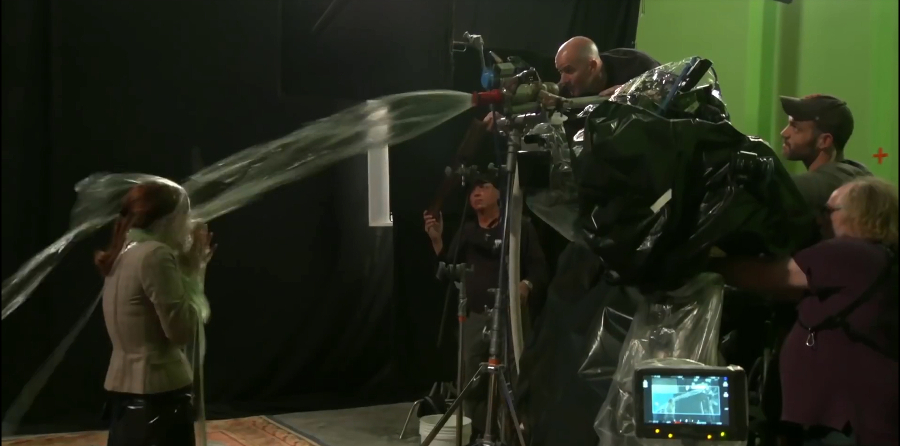
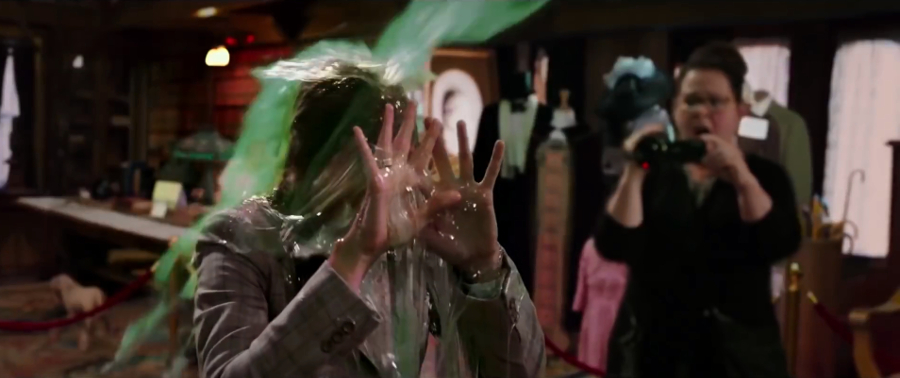 Kristen Wiig slimed on set of GhostbustersSlime appears to be pumped through a fire nozzle and contolled by an electric or air controlled valve.
Kristen Wiig slimed on set of GhostbustersSlime appears to be pumped through a fire nozzle and contolled by an electric or air controlled valve.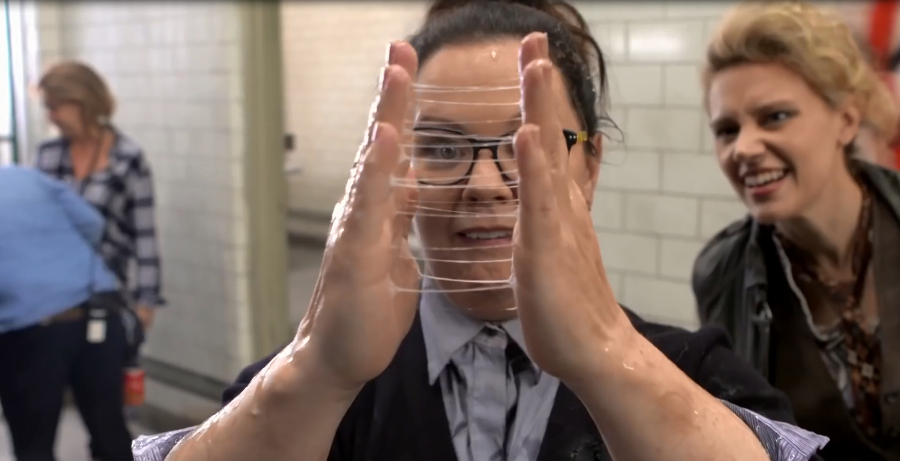 Stringiness of the slime
Stringiness of the slime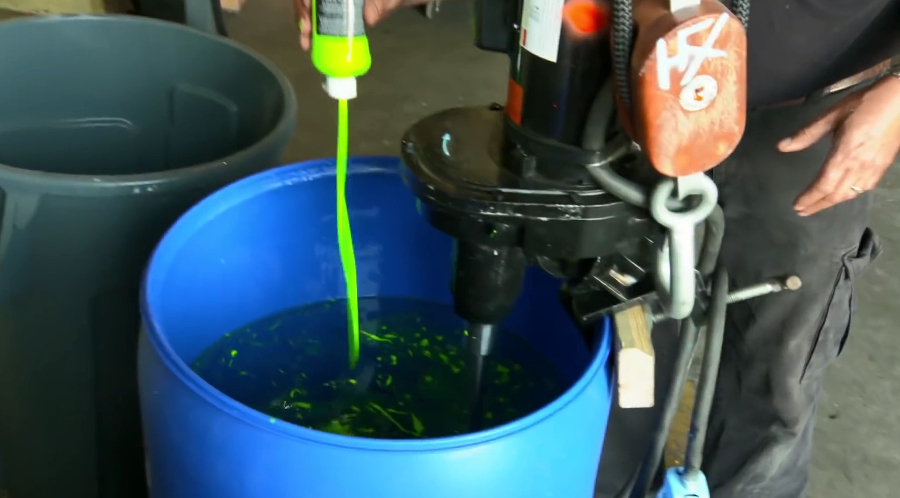
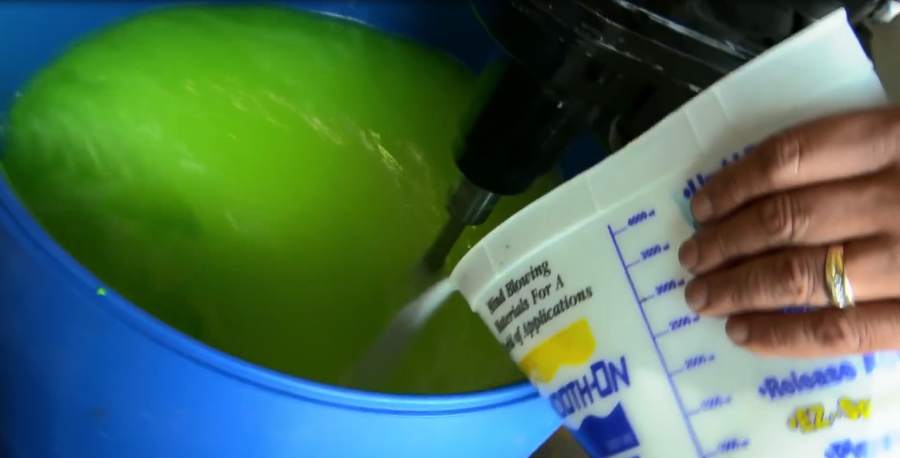
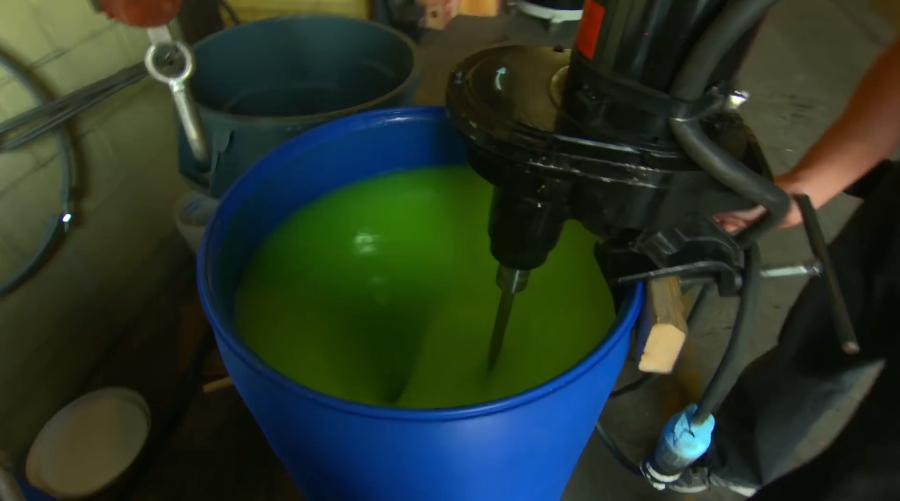
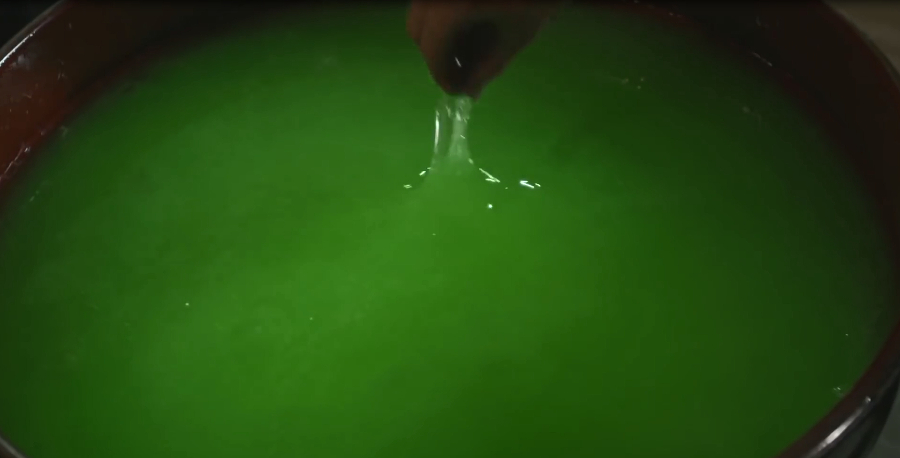 Slime being mixed- Note the colourant & the powder being mixed in
Slime being mixed- Note the colourant & the powder being mixed in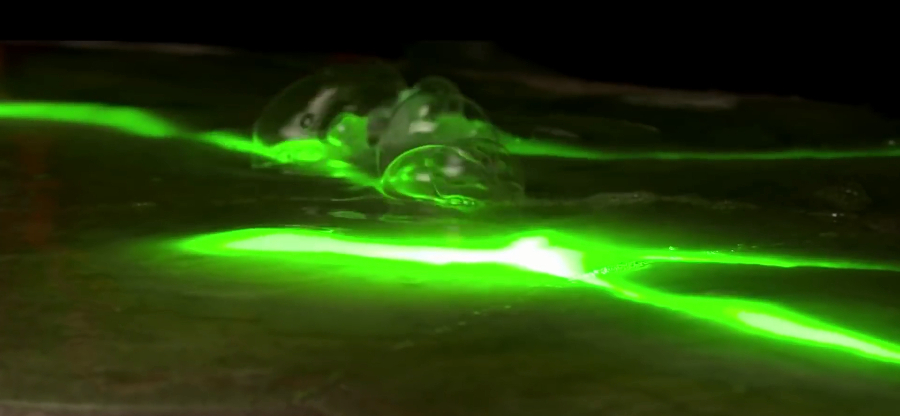
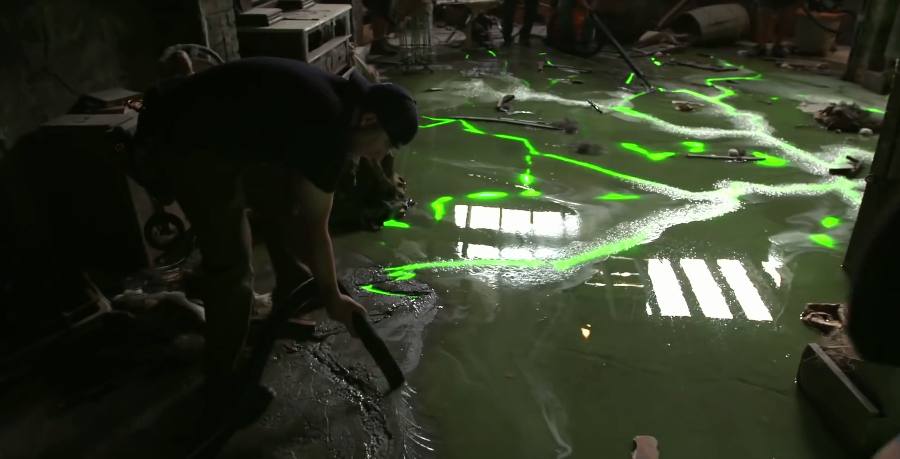 The slime lit from below
The slime lit from below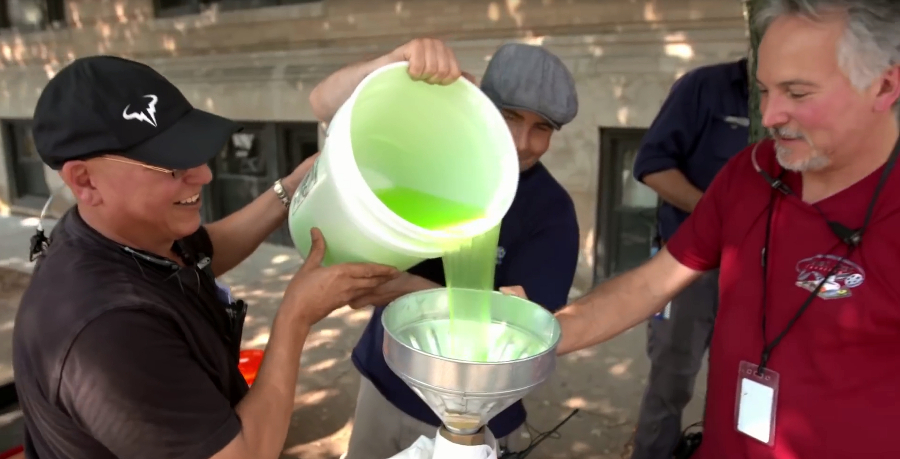
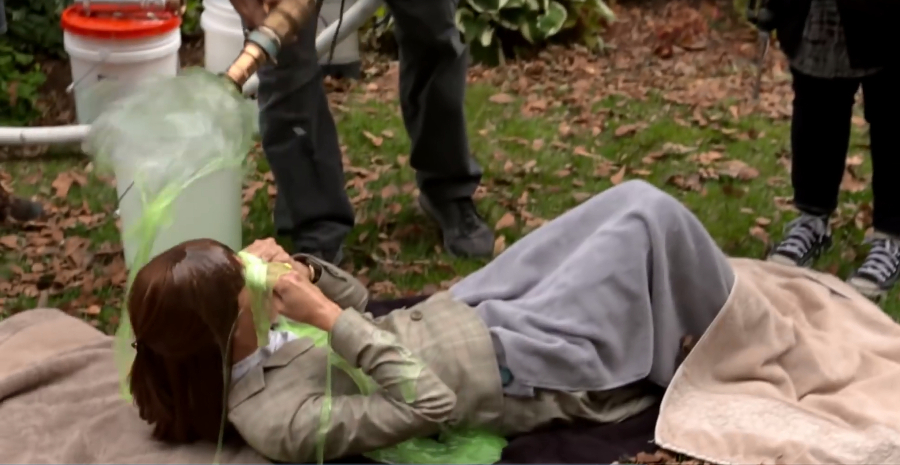 Tank being filled and then used
Tank being filled and then used
Note:
Methocel is a brand name used by Dow for a range of thickeners, not
just methylcellulose, so if you hear this quoted it is not sufficient
to determine the actual thickener. Just to complicate things further,
it has also become somewhat a generic term for thickeners, so is
difficult to rely on any source that quotes just 'Methocel'.
(1). http://en.wikipedia.org/wiki/AFI%27s_100_Years...100_Movie_Quotes
(2). Making Ghostbusters. Don Shay. New York Zoetrope. ISBN 0-918432-68-5
(3). Cinefex 40. Don Shay. Nov 1989.
(4). http://ghostbusters.wikia.com/wiki/Psychomagnotheric_Slime
(5). Ghostbusters Gets Gross With Slimy
Effects, The Cincinnati Enquirer Saturday,
June 24, 1989 Section D, Julie Hinds
(6). https://twitter.com/paulfeig/status/611302714161668096?lang=en
(7). http://www.gq.com/story/ghostbusters-paul-feig
(8). http://www.ultramaterials.com/
(9). https://www.youtube.com/watch?v=925FeYQ8saA




